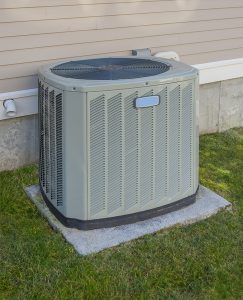Between the concerns about climate change and the rising costs of energy production and consumption, there is a lot of experimentation with new technology. Standard choices are being re-evaluated and new designs are changing the requirements for various parts.
In homes and other buildings where systems were designed and installed according to the cheaper energy parameters prevalent in the day, it may be time to consider drastic changes to increase the efficiency and decrease impact on the carbon footprint. Room for improvement can be found in many corners.
Heat Pump Technology
One appliance that is getting a lot of attention in Salt Lake City is heat pumps, a device that transfers thermal energy from one location to another, usually in the direction of from a colder temperature to higher and generally the opposite of the natural flow. While compressor-driven air conditioners and freezers are technically heat pumps, heat pump is the term that usually implies one of the less-common devices in the class that are not dedicated to refrigeration-only.
A heat pump installation maintains a thermally conditioned-space can be used to provide either heating or cooling, depending upon whether the environment is cooler or warmer than the conditioned-space. Typically pumps utilize some thermal energy from the environment itself, such as the natural heat beneath the Earth’s surface.
By simply transferring the energy rather than producing it, heat pumps are being more seriously considered as attractive alternatives to provide an efficient and clean system for conditioning public and living spaces.
Change of Use
In considering a change from an existing system to a heat pump, there are many details to compare to see if it makes any sense at all. The overall local climate (cool or hot) in general, and the availability of geothermal heat, in particular, are two major factors.
Since a heat pump typically moves conditioned air through ductwork, the advantages of the change are much more realistic with a system of pre-existing ducts such as a forced air furnace or central air-conditioning unit. While a heat pump often requires a larger volume of ducts, the old network of metal tunnels was often over-sized for inefficient furnaces and should do fine in a conversion to a heat pump.
The Right Data
Since the required formulas are dependent upon variables such as size, distance, volume and oomph, the design is strategic and makes all the difference. Consulting with a trained and experienced professional such as (Your Company) is critical to the success of the conversion.
Do the homework to get the best recommendation for your home, and if you need help just call Design Comfort.
Continue Reading
Tags: Salt Lake City, SLC, UT
Posted in Heat Pumps, Heating, heating system installation | Comments Off on Are Your Air Ducts Able to Handle a Heat Pump?
 As chilly and long as our winters are, there’s no denying the fact that our summers pack quite the punch. You’ll want to approach this summer with a fully effective air conditioner, which has been properly maintained and cared for, and is as efficient as possible.
As chilly and long as our winters are, there’s no denying the fact that our summers pack quite the punch. You’ll want to approach this summer with a fully effective air conditioner, which has been properly maintained and cared for, and is as efficient as possible.

